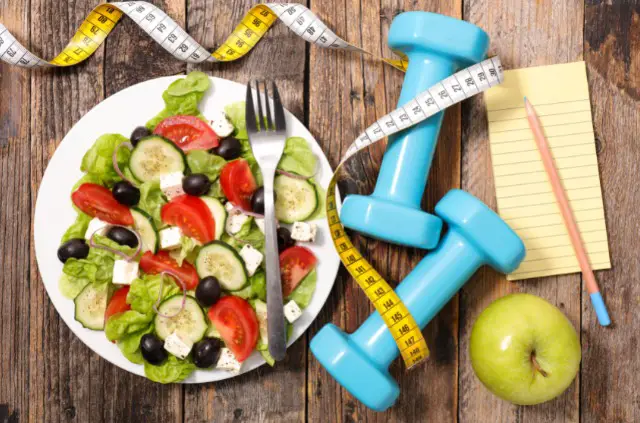Reverse Dieting 101: Eat More and Stay Lean
Does eating more food without gaining weight sound fun? This is one misconception I often hear about reverse dieting. If you want to learn what a reverse diet actually is (and if it’s right for you) keep reading.
In the sections below I’ll list the foundational principles around this meal plan. You will also learn how long the process should last and when to cut back on calories.
What is Reverse Dieting?
A reverse diet is when you slowly increase calorie input over the course of a few weeks (or months), resulting in minimal weight gain.
You might think a reverse diet can only amount to weight gain. After all, eating more often leads to an increase level of body fat. However, this isn’t always the case.

Over time the body will adapt to moderate changes from reverse dieting. As a result, you will require slightly more calories in order to maintain weight.
The idea behind a reverse diet is to gradually increase calories, so that your metabolic rate increases.
How this Impacts Your Metabolism
At the same time, you want to keep your weight stable and prevent extra body fat gain. Our metabolisms adapt to constant stages of standard dieting and fat loss.
During a fat loss stage calories are restricted, paired with an increased level of cardio. But this comes with a downside – because your body adapts to a new metabolic rate and it slows down as a result.
Body fat regain occurs when your diet ends and you go back to eating a normal diet. Reverse dieting helps to literally reverse this trend, as you slowly introduce more food into your system.
Why You Should Reverse Diet
- Eliminate rapid fat gain after a dieting stage
- Prevent overeating and binge eating
- Build up your metabolic capacity
It’s important to note that you can gain a few pounds after reverse dieting – but you should still have a lean physique. Dieting down for a bodybuilding competition is unnecessary for most people and isn’t sustainable.
Your body is operating on such low calories you feel sluggish and lack energy. These physical feelings are eliminated with a reverse diet, as you are able to eat more food while staying relatively lean.

Sure, you won’t be at 3% body fat, but you can be at 10-12% body fat and still look good. You will also have more energy from increasing your daily calories. Doesn’t that sound much better than restriction?
How to Reverse Diet
So, you’ve done the research and have decided that a reverse diet is for you. The below week-by-week explanation can be used as a guideline on how to reverse diet.
This plan assumes you have just finished a diet stage with high levels of cardio and clean eating.
Week 1
Slightly up your daily caloric intake while maintaining an aggressive activity level during the first week. In other words, keep doing high amounts of cardio and weightlifting.
When you first begin a reverse diet, avoid cutting out cardio from your fitness plan – as this will almost always cause weight gain.
Weeks 2-3
Continue eating slightly above your daily diet intake. You can either calculate your needed level of calories, or increase them by a moderate amount.
Most people agree that increasing your calories by 50-100 every few days is sufficient enough on a reverse diet, without going overboard.
Weeks 4-6
Continue eating at a slight surplus and measure your progress. Try 100-150 calories more every week, but only use this as a guideline.
Your body may require more or less calories, depending on a number of different factors. Age, weight, sex, and activity level are just some things that will impact your metabolism.
When to Stop Reverse Dieting
Most people will reach a plateau with any meal plan. In general, the best time to stop a reverse diet is when you rapidly begin to gain weight.

It sounds easy, but the process of figuring out how much weight your body is gaining can be difficult. Our bodies tend to change on a daily basis.
And once you’ve reached your goal weight, you can begin upping your calories. But when do you stop? Keep these factors in mind when you’re looking to stop reverse dieting.
1. Watch for Warning Signs
If you’ve ever tracked your weight on a diet, you know that weighing less each day doesn’t always happen. Our bodies are constantly changing and the average adult’s weight fluctuates up to 5 or 6 pounds per day.
How much water we drink, sodium intake, and exercise are just some factors that impact daily weight loss (or weight gain). It’s essential to track your weight on a daily basis if you want to know when to stop reverse dieting.
2. Be Consistent
Be consistent with your daily weigh ins and always weigh yourself around the same time of the day. The best time to weigh yourself is immediately in the morning.
Go to the bathroom and don’t eat, or drink anything before you step on the scale. When you’re consistent with the daily weigh ins, you will gain a more accurate understanding of your body.
Use this information to develop an average body weight. But keep in mind this will always fluctuate around 5-6 pounds.
3. Know Your Goal Weight
This may sound too simple, but it helps to know your goal before starting a reverse diet. Identify a realistic target weight you would like to hit prior to starting a reverse diet.
If the finish line isn’t clear, then how will you get there? Only you will know what the end goal will be. That’s why it helps to track your progress during your normal diet.
When you’re in a caloric deficit and losing body fat, track your progress by taking pictures. When you’re ready to reverse diet, you will know what stage you want to reach.
Conclusion
Reverse dieting is an effective nutritional strategy you can try, after your next cutting stage. Keep in mind that reverse dieting works best following a normal diet – or a period of time when you have been restricting calories.
By slowing increasing your daily caloric intake, you can stay lean, while eating more. Remember, this is not a binge diet. It’s a way to provide your body with more calories, without rapidly gaining weight back.
Similar Articles
Search Terms
- What is reverse dieting?
- Reverse dieting 101
